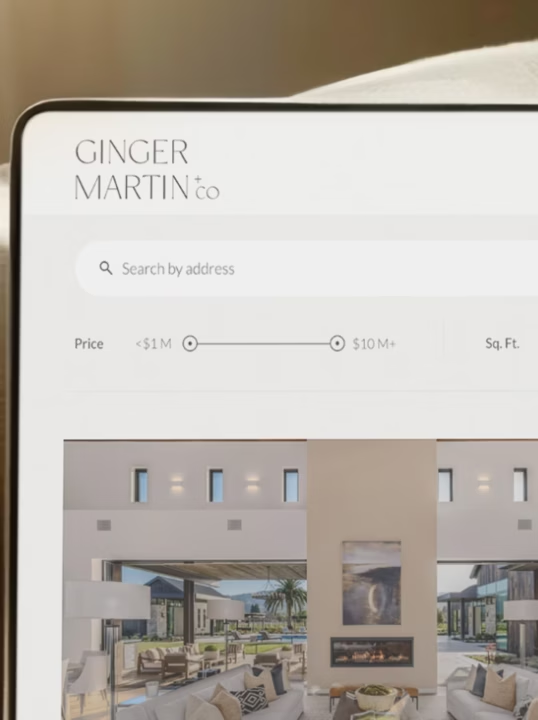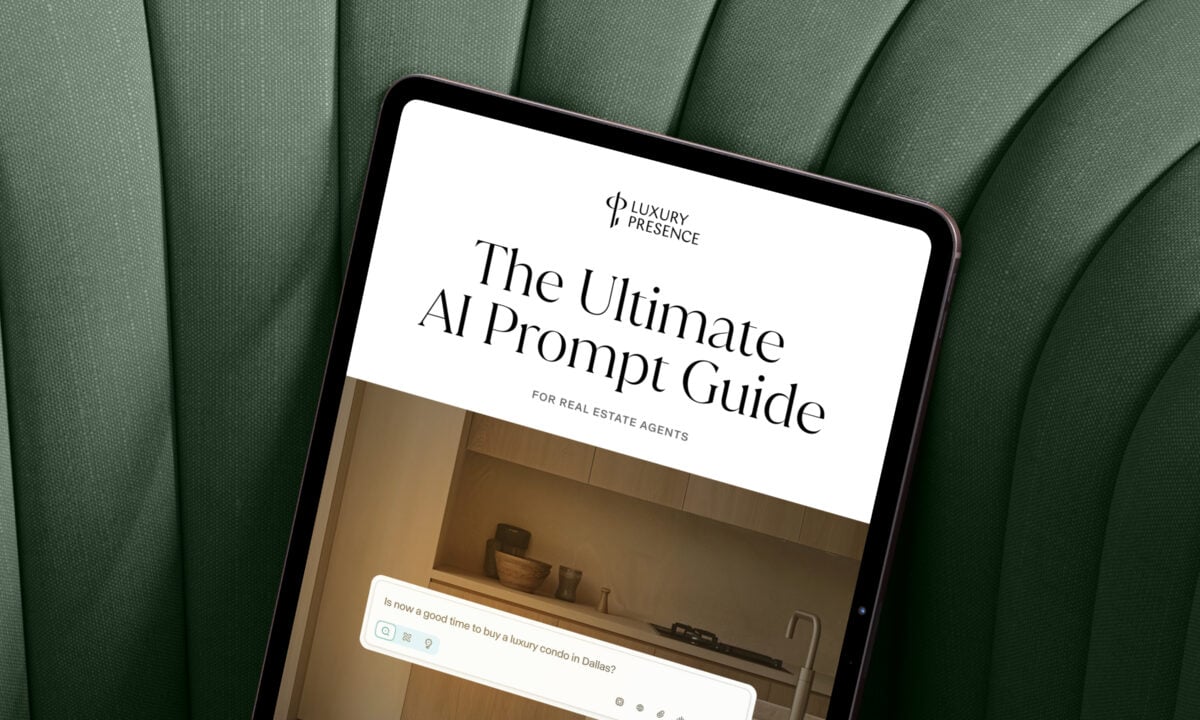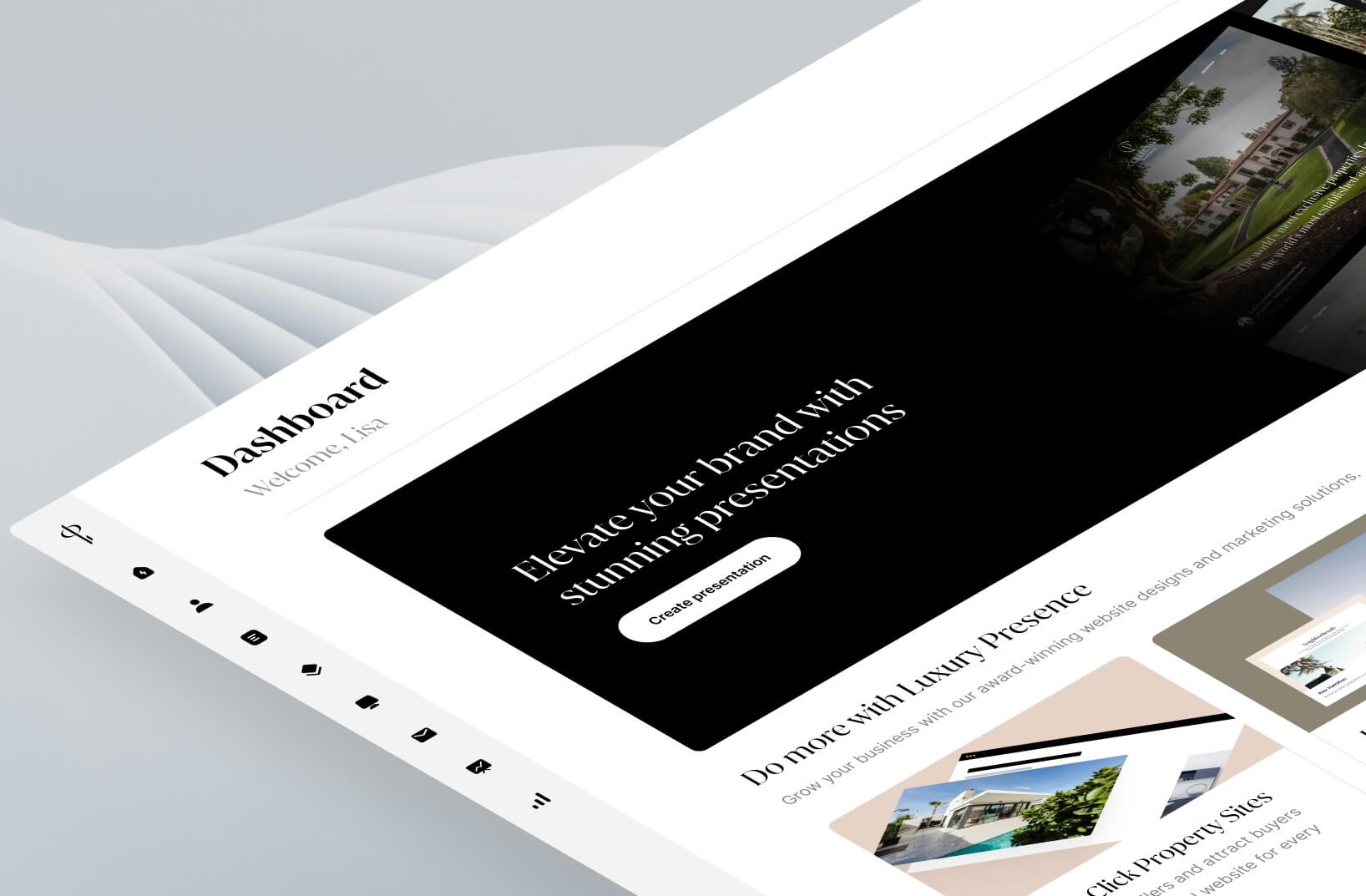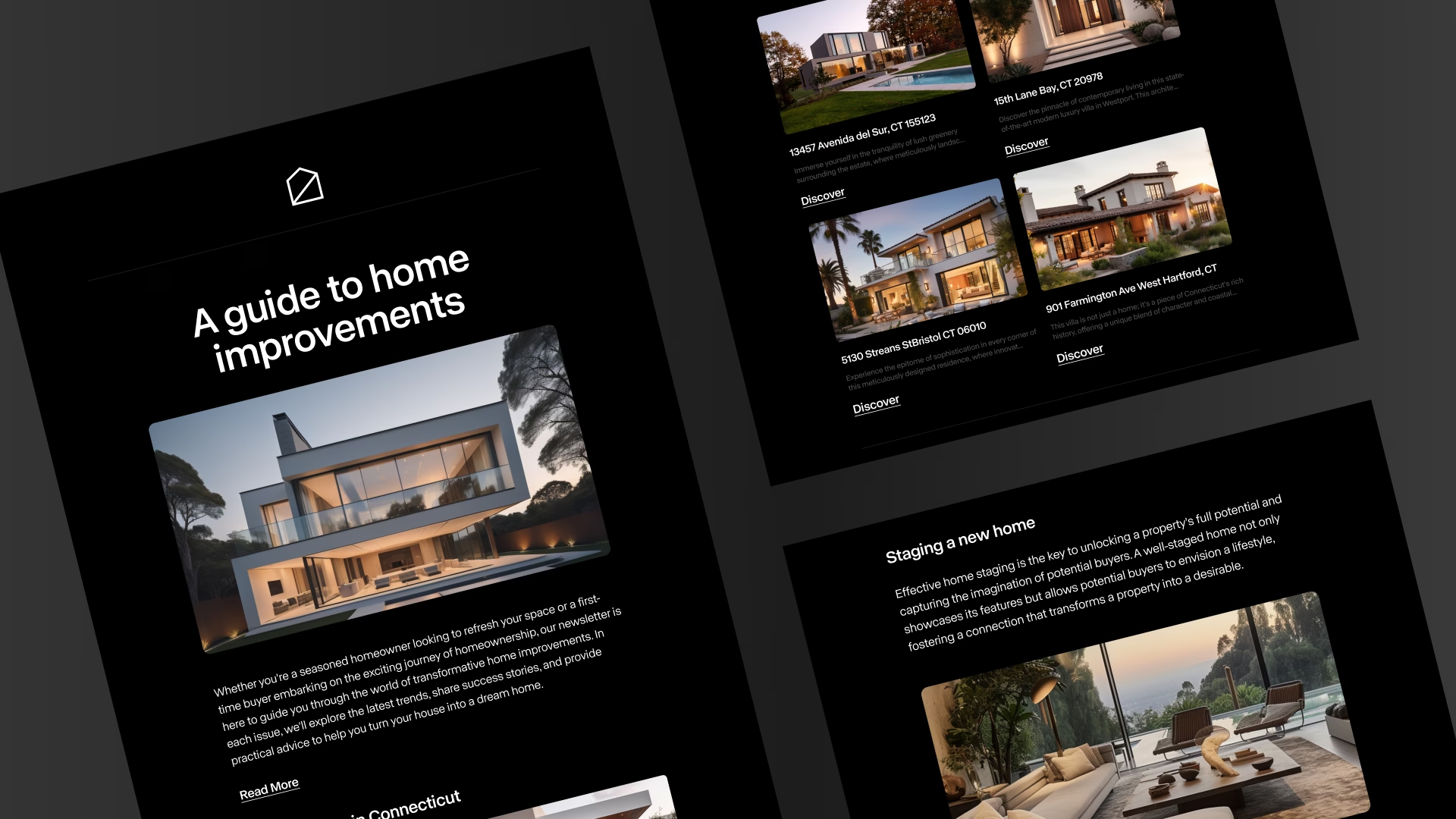
With its ability to foster connections, showcase expertise, and drive lead generation, real estate newsletter marketing has become an indispensable tool for agents seeking to establish themselves as trusted advisors in the eyes of clients and prospects alike.
In this article, we explore the key strategies, best practices, and benefits of real estate newsletter marketing, providing actionable insights to help agents harness the full potential of this powerful marketing channel.
Find It Fast
What is a real estate newsletter, and why should you have one?
A real estate newsletter is a valuable communication tool used by agents and brokers to stay connected with clients, prospects, and other industry stakeholders. Typically distributed on a regular basis, such as weekly, bi-weekly, or monthly, these email newsletters provide subscribers with relevant and timely information about the real estate market, local trends, and industry news.
Real estate monthly newsletters deliver powerful returns. In real estate, email campaigns often bring $36 to $42 back for every $1 spent, placing them among the highest‑ROI marketing channels, with platforms routinely pulling open rates in the 20–40 % range.
Tricia Lee, one of New York’s top-producing agents, is known for her standout personal brand, and she credits newsletters as her single most productive source for leads. When asked her lead generation secret, she didn’t hesitate to answer, “my newsletter.”
What newsletters actually do for your business
They’re a low-cost, high-impact way to stay present in people’s inboxes and on their radar.
- You stay visible. In real estate, it’s all about timing. Newsletters help you stay relevant and memorable so that when someone’s ready to buy or sell, they think of you first.
- You build real relationships. Deliver valuable insights straight to your readers: Market updates, local tips, exclusive listings, and position yourself as a knowledgeable, trusted resource.
- You drive real results. Every newsletter is an opportunity to guide action. Add a compelling call to action (schedule a consult, explore listings, forward to a friend) and watch your engagement turn into conversion.
- You boost your site traffic. Linking to listings, blog posts, or resources not only adds value but also brings more eyes to your website and more opportunities to grow.
- You control the spend. Compared to most ad campaigns, newsletters are a lean investment. If you’ve got a solid CRM, they’re also easier to personalize, test, and optimize.
Bottom line: If you’re not sending newsletters, you’re leaving leads on the table. Done right, they’re a smart, strategic growth tool you can’t afford to ignore.
Best practices for real estate newsletters
From building your list to segmenting your audience to sending content that actually converts, here’s how to get every part of your newsletter working harder.
How to grow a high-quality, high-converting email list
Before you can send a newsletter that gets opened, clicked, and remembered, you need the right audience in place. A high-quality email list is the foundation of every successful campaign, and it’s worth doing right from the start.
- Start with your database. Import past clients, active leads, and your sphere. Make sure you have permission and segment from the start.
- Add a signup form to your site. Make it easy to find and focus on value. Instead of “Join my list,” try “Get monthly market insights, new listings, and local favorites.”
- Offer a lead magnet. Give people a reason to subscribe, like a buyer’s guide, market forecast, or neighborhood report.
- Capture emails at every touchpoint. Open houses, meetings, events, and social media are all chances to grow your list. Have a simple opt-in ready.
- Promote it on social. Use Instagram, LinkedIn, and Facebook to show what subscribers get. Share testimonials and make it feel exclusive.
- Partner up. Team up with mortgage brokers, designers, or contractors to reach new audiences through cross-promotion.
- Never buy lists. Engagement is low, trust is lost, and you risk legal issues. Every contact should choose to hear from you.
- Make unsubscribing easy. Always include a clear unsubscribe link. A smaller, engaged list is more powerful than a big one that ignores you.
Using real estate newsletter marketing effectively requires a strategic approach. Here are some key guidelines.
Segment your audience for more opens, more clicks
Use your understanding of your target audience’s demographics, preferences, and needs to tailor your newsletter content. Segmentation allows you to divide your subscriber base into distinct groups based on criteria such as:
- Location preferences
- Property type
- Budget range
- Stage of the homebuying/selling process
- Engagement level
- Demographics
- Interests
- Past behavior
- Client status (former, current, prospective)
Why it matters: Segmented campaigns have significantly higher open and click rates. Mailchimp reports that segmented email campaigns see 14 percent higher open rates and 100 percent higher click-through rates than non-segmented campaigns. For agents, segmentation is what transforms a newsletter from “just another email” to “this feels written specifically for me.”
Real estate coach Chirag Shah explained the point of view of someone on your email list: “I bought a house. I don’t care about your open house. I don’t care about ‘just listed.’ And the worst email to send is price reduction,” he said. He continued, “Talk about the things that are important to them, not the things that I want to talk about.”
Provide value to your readers
Offer engaging content that educates, informs, and entertains your audience. This could include market updates, tips for buyers and sellers, and local news and events.
Strike a balance between promotional content and informative content. This approach not only keeps your audience engaged but also ensures that your messaging remains relevant to their needs and interests and adds value to your subscribers’ lives beyond just selling them a product or service.
Here are some examples of how you can capitalize on segmentation to provide value to your audience:
Past clients are your most valuable segment for referrals and repeat business. Offer home maintenance reminders tied to seasons, share community news and local events, provide lifestyle content that adds value beyond real estate, and celebrate milestones like home purchase anniversaries. Your goal is to stay present and helpful so they think of you when they are ready to move again or when a friend asks for a recommendation.
Investors require a different approach entirely. Focus on rental yields and cash-on-cash returns, provide long-term market analysis and appreciation trends, highlight off-market opportunities or distressed properties, and offer portfolio strategy insights. You need to demonstrate you understand investment real estate as a business, not just an emotional purchase.
Geographic segments allow you to hyper-localize your content. Someone interested in downtown condos does not need information about suburban school districts. Someone monitoring a specific ZIP code wants granular data about that area, not citywide averages.
Behavioral segments are based on actions people take. Someone who clicked on three luxury listings last month should receive more luxury content. Someone who opens every email about new construction is signaling interest in that category. Let their behavior guide your content strategy.
This type of focus helps prevent subscriber fatigue and reduces the risk of opt-outs, while also fostering long-term relationships built on mutual respect and trust.
Maintain a consistent schedule
Establish a regular schedule for sending out newsletters, whether it’s weekly, bi-weekly, or monthly. Consistency helps build anticipation and keeps your brand top of mind with subscribers. As Tricia Lee said, “I did my newsletter for seven months before starting to get returns from it,” Lee said. Consistency over time is what builds momentum.
Use A/B testing to determine the best cadence for each segment of your audience. Your cooler leads don’t need to be inundated with newsletters, while your active buyers probably want to hear from you much more often.
Also, test with what days to send your newsletters and even what time of day. Do more people open your newsletter when it’s sent on a Wednesday evening as opposed to Saturday morning?
Get more mileage out of every piece of content
Quality content takes time to craft, so make sure your content is working as hard as you are. If certain blog posts are working well and resonating with certain audiences, use them in your newsletters.
For example, if your buyer’s guide has great page views, repurpose it into a series of email newsletters that not only educate your audience but also nurture leads.
The AI Blog Specialist from Luxury Presence gives you high-quality, ready-to-go content tailored to your market. Repurpose a blog post into a market update. Turn a how-to into a quick tip. The writing’s already done, you just make it yours.
AI Blog Specialist
Effortlessly attract and engage clients with AI-powered blog content tailored to grow your business.
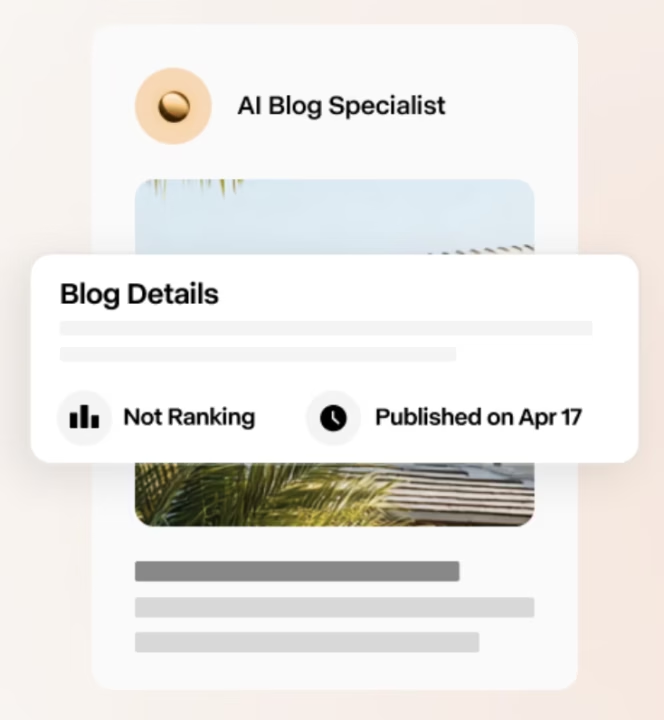
Craft compelling subject lines
Attention-grabbing subject lines entice recipients to open your newsletter. Keep them concise, relevant, and intriguing to increase open rates. Creating a sense of urgency is also an effective tactic. A/B test different styles of subject lines so that data informs your efforts. Also, consider adding emojis to see what works best for your audience.
Here are some examples:
- “Exclusive: Your Insider’s Guide to {neighborhood} Real Estate Trends”
- “Unlock Your Dream Home: 🔥 Hot New Listings Just In!”
- “Don’t Miss Out: Limited-Time Offer on Your Dream Home”
- “Discover the Secrets 🤫 to Maximizing Your Home’s Value”
- “Your Weekly Dose of Real Estate Wisdom: Market Updates, Tips & Trends”
- “Ready to Upgrade? Explore the Top Luxury Properties in {city}”
Optimize design and layout
Ensure your newsletter is visually appealing, mobile-responsive, and easy to navigate. Use eye-catching images, clear headings, and white space to enhance readability.
Include specific calls to action (CTAs)
Encourage reader engagement and action by including clear CTAs throughout your newsletter. Whether it’s scheduling a showing, exploring listings, or following you on social media, make it easy for recipients to take the next step. Here are some examples of effective CTAs:
- Ready to find your dream home? Contact me today to schedule a personalized consultation and start your home search journey!
- Explore our latest listings and discover your perfect property. Click here to view available homes and schedule a showing.
- Looking to sell your home? Let’s discuss your goals and create a customized marketing plan to maximize your property’s value. Call me to get started!
- Want to stay up to date on the hottest listings? Subscribe to our newsletter for up-to-date listings as soon as they hit the market.
- Curious about the current value of your home? Request a complimentary market analysis to discover how much your property is worth in today’s market.
- Follow us on social media for daily updates, behind-the-scenes glimpses, and exclusive content. Connect with us on {social media platform} today!
Monitor and analyze performance
Measuring the effectiveness of newsletter marketing involves tracking various metrics to gauge subscriber engagement, conversion rates, and overall campaign performance. Here are key metrics and methods to measure the effectiveness of your newsletter marketing:
- Open rate: This metric indicates the percentage of recipients who opened your newsletter. A high open rate suggests that your subject lines and sender name are compelling enough to entice subscribers to open your emails.
- Click-through rate (CTR): CTR measures the percentage of recipients who clicked on one or more links within your newsletter. It reflects how engaging and relevant your content is to your audience and can help you understand which topics or CTAs resonate most with subscribers.
- Conversion rate: This represents the percentage of subscribers who completed a desired action after clicking on a link in your newsletter, such as signing up for a webinar, scheduling a consultation, or making a purchase. It provides insights into the effectiveness of your newsletter in driving specific outcomes.
- Subscriber growth rate: Monitor your contact list’s growth over time to assess the effectiveness of your subscriber acquisition strategies. A healthy subscriber growth rate indicates that your content and promotions are attracting new readers and retaining existing ones.
- Unsubscribe rate: Keep an eye on the percentage of subscribers who opt out of receiving future newsletters. A high unsubscribe rate may indicate that your content is not meeting readers’ expectations or that your email frequency is too high.
- Bounce rate: This is the percentage of emails that were not delivered to recipients’ inboxes due to invalid email addresses or other issues. A high bounce rate may suggest that your email list needs cleaning or that your email delivery practices require optimization. Note that emails delivered to the recipient’s spam or junk folder are technically considered “delivered” because they reached the recipient’s email server and were placed in a folder, albeit not the primary inbox.
- Engagement metrics: Beyond clicks, consider other engagement metrics such as time spent reading your newsletter, shares on social media, or replies to your emails. These qualitative indicators can provide additional insights into how subscribers are interacting with your content.
- Revenue generated: If your newsletter campaigns are directly tied to sales or revenue generation, track the revenue generated from subscribers who clicked on links in your emails. This metric helps determine the ROI of your newsletter marketing efforts.
By regularly monitoring these metrics and analyzing the performance of your newsletter campaigns, you can identify areas for improvement, optimize your content and strategies, and ultimately achieve better results from your newsletter marketing efforts.
Comply with regulations
Ensure compliance with applicable laws and regulations, such as GDPR or CAN-SPAM, by providing a clear opt-in process, including an unsubscribe option, and respecting subscribers’ privacy preferences.
Types of real estate newsletters + 55 content ideas
We’ve collected dozens of content ideas for the best email marketing newsletters, divided up into categories. Use this to start brainstorming ideas for your own newsletters.
Advice, tips, how-to newsletters
By providing helpful guidance on various aspects of real estate, agents demonstrate their expertise and commitment to client success, fostering stronger relationships.
21 subject line ideas for advice newsletters
- “10 Essential Tips for First-Time Homebuyers”
- “How to Stage Your Home for a Quick Sale: Expert Tips and Tricks”
- “Navigating the Home Inspection Process: What Buyers Need to Know”
- “The Ultimate Guide to Negotiating the Best Price for Your Home”
- “5 Common Mistakes to Avoid When Selling Your Home”
- “Understanding Mortgage Options: A Beginner’s Guide”
- “DIY Home Improvement Projects to Increase Property Value”
- “Tips for Finding the Right Real Estate Agent for Your Needs”
- “Preparing Your Home for an Open House: Dos and Don’ts”
- “The Art of Pricing Your Home Right: Strategies for Sellers”
- “Maximizing Curb Appeal: Simple Ways to Boost Your Home’s Exterior”
- “How to Buy a Home in a Seller’s Market: Strategies for Success”
- “Understanding Home Appraisals: What Buyers and Sellers Need to Know”
- “Tips for Investing in Rental Properties: Getting Started”
- “Creating a Budget for Homeownership: Managing Expenses Wisely”
- “Moving Day Survival Guide”
- “Real Estate Glossary: Every Word You Need to Know”
- “Improving Energy Efficiency in Homes: Your Guide to Smart Features”
- “Downsizing Tips for Empty-Nesters and Seniors”
- “It’s Tax Season: Maximize Tax Deductions for Homeowners, Investors, and Sellers”
- “Home Renovation Financing Options for Every Project on Your List this Year”
Market update newsletters
Market updates make good real estate newsletters because they provide valuable information, showcase expertise, foster client trust, and keep clients informed and engaged in the dynamic world of real estate. Your MLS and local Realtor Association will have great resources for this information, but also check with your brokerages, source local news, and collect your own insights, informed by your experience.
12 ideas for market update newsletters
- Monthly, quarterly, and yearly market snapshot
- Neighborhood spotlight
- Luxury market analysis
- First-time homebuyer market insights
- Investment property analysis
- New construction market update
- Rental market report
- Foreclosure and distressed property analysis
- Demographic shifts and market impact
- Market forecast and predictions
- Market comparisons
- Hot market areas
Newsletters featuring community content
Sharing local events and news in real estate newsletters is a win-win strategy that strengthens client relationships, enhances the neighborhood’s appeal, and fosters a sense of community cohesion, ultimately benefiting both residents and real estate agents.
Lee, famously the unofficial mayor of Brooklyn, explained, “We’re looking for a way to connect our clients to the communities that they’re living in.” That community focus comes through in everything she does. “Even if you didn’t know me,” Lee said, “you’d pick that up in my marketing efforts and the things I do in the community.”
Your newsletter should sell more than houses. It should sell the lifestyle of your market: Events, coffee shops, parks, galleries, new gyms, and neighborhood vibes. “Everything is new to someone,” Lee said. “If you’re starting out in your industry in a certain market that’s new to you, you have so much content. You have so much to share.”
14 ideas for community-related newsletters
- Local festival and fair highlights
- Charity and fundraising events
- Neighborhood block parties
- Farmer’s markets and artisan fairs
- Outdoor concerts and movie nights
- Sporting events and tournaments
- Community workshops and classes
- Neighborhood clean-up days
- Seasonal celebrations
- Pet adoption and animal welfare events
- Historical tours and cultural experiences
- Community garden programs
- Health and wellness events
- Educational events for families and children
Listings newsletters
Showcasing new listings demonstrates the breadth and depth of your inventory, highlighting your expertise and ability to connect clients with desirable properties.
If you don’t have enough listings on your own, showcase listings from fellow agents in your brokerage. By regularly featuring new listings, you reinforce your reputation as a trusted advisor who is actively working to meet client needs and preferences.
7 subject line ideas for listing content newsletters
- “Hot Off the Market: Your Weekly New Listings Update”
- “Just In: Explore Our Latest Property Listings!”
- “Fresh Finds: Discover Our Newest Listings Today”
- “Your Exclusive Look: New Listings Unveiled”
- “Unlock Your Dream Home: Our Latest Listings Revealed”
- “First Look: Be the First to Know About These New Listings”
- “New Week, New Listings: Your Guide to What’s Available”
Real estate newsletters + Luxury Presence
“When I’m engaging with you, I’m making myself your broker,” Tricia Lee said. “I don’t know when you’re going to sell your property, but I’m going to sell it. And it happens.”
That kind of conviction comes from knowing your brand is always working for you, online, in their inbox, and everywhere else that matters. At Luxury Presence, we give you the platform to do just that.
From standout websites to high-impact digital marketing and AI tools that scale your efforts, we’re built to grow your business and your presence.
Get the platform that drives results.
Agents using Luxury Presence grew sales nearly 2x faster than their peers, increased sold listings by 6%, and closed over $300B in transactions. Ready to grow your business? Let us show you how.
